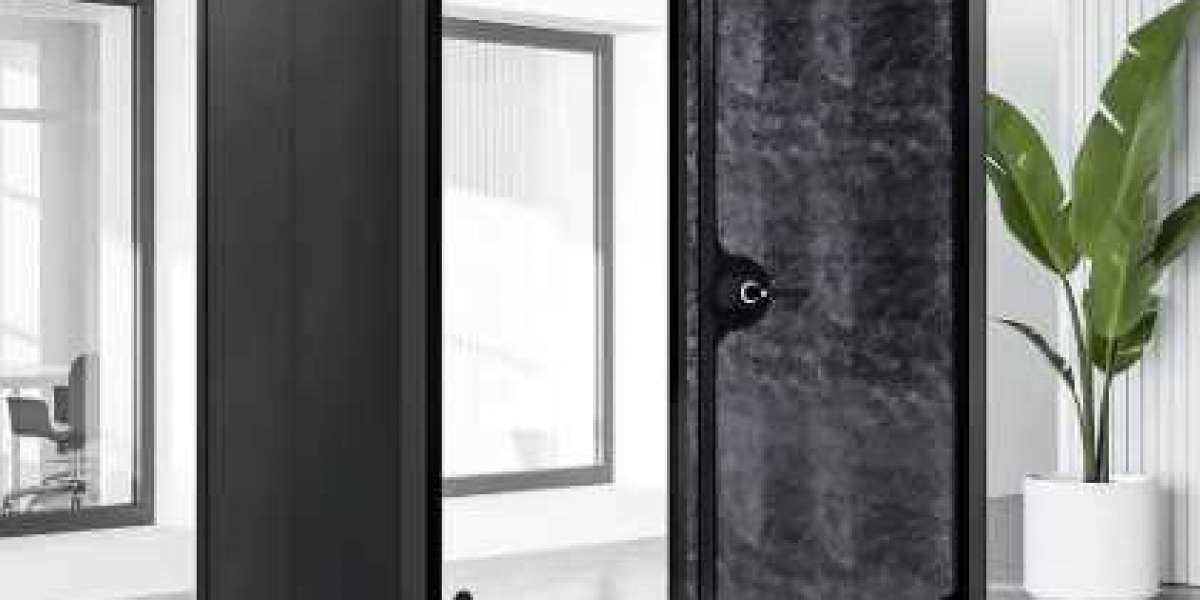1. Brief introduction of modular soundproof office pod and ventilation requirements
With the development of enterprises, their demand for office space is constantly changing. Modular office cabin, a prefabricated unit designed for flexible office solutions, is increasingly favored because of its simple installation, high cost-effectiveness, and flexibility. However, when choosing a modular office cabin for the workplace, it is very important to ensure that it is equipped with an appropriate ventilation system.
2. Why is good ventilation important in modular office space?
2.1 Maintain good air quality.
Ventilation plays a key role in improving indoor air quality, which directly affects the health and work efficiency of employees. Without proper airflow, the air in the modular office space may become old and full of pollutants. This may lead to health problems such as headache, fatigue, and respiratory discomfort.
Good ventilation can remove indoor pollutants, such as carbon dioxide, dust, and volatile organic compounds (VOCs), which may come from materials or furniture in office spaces. It can also promote the inflow of fresh air, which is very important for creating a healthier and more efficient working environment.
2.2 Improve comfort and happiness
A well-ventilated space can keep the balance between temperature and humidity, thus creating an overall comfortable environment. When employees breathe fresh and clean air, they are more likely to stay focused and energetic, reduce fatigue, and improve cognitive function.
3. The ventilation system of a modular soundproof office pod
3.1 Natural Ventilation in Modular Office Cabin
In a modular office cabin, the most basic and cost-effective ventilation method is natural ventilation. This system uses open windows, vents, and other openings to circulate outdoor air in the cabin. If properly designed, natural ventilation can keep the air fresh in low-consumption environments or areas with good outdoor air quality.
However, natural ventilation is not always enough, especially in urban environments or areas with serious air pollution. In this case, enterprises may need to rely on more advanced systems.
3.2 Mechanical ventilation for efficient air flow
Mechanical ventilation is a feasible solution for areas with insufficient natural ventilation. These systems usually include fans, pipes, and air handling units, which can continuously supply fresh air and exhaust the dirty air in the cabin.
The mechanical system can be customized according to various requirements:
Only the air supply system introduces fresh air.
Only the exhaust system exhausts dirty air. The balanced system combines the two to ensure the uniform exchange of air, which is very suitable for crowded cabins or places with poor natural ventilation.
3.3 Energy-saving heat recovery ventilation (HRV) and energy recovery ventilation (ERV)
For enterprises pursuing sustainability and energy efficiency, heat recovery ventilation (HRV) and energy recovery ventilation (ERV) systems are excellent choices. These advanced systems are not only used for ventilation, but also can recover the heat from the discharged dirty air and transfer it to the incoming fresh air, thus minimizing the extra heating demand.
The HRV system performs best in a cold climate and helps to keep the heat.
The ERV system is designed to adjust temperature and humidity at the same time, making it very suitable for areas with extreme weather conditions.
These systems reduce heating and cooling costs and help reduce the carbon footprint of enterprises, so they are very suitable for enterprises that pay attention to environmental protection.
3.4 Air filtration system for improving air quality
The air filtration system is also very important to improve the air quality in the modular soundproof office pod. Many cabins are equipped with built-in air filters that can capture dust, allergens, and other harmful particles in the air. In an urban environment or an outdoor polluted area, air filtration becomes an essential function.
Some cabins are equipped with high-efficiency particulate air (HEPA) filters or ultraviolet (UV) lamp systems, which can eliminate bacteria and viruses, thus further improving air quality.
4. The key factors to be considered when selecting the ventilation system of modular office units.
4.1 Size of office unit and number of personnel
The size of the office unit and the number of people working inside will significantly affect the type of ventilation required. Larger office units or units with high personnel density need more advanced systems, such as mechanical ventilation or a heat recovery system, to ensure good air circulation.
4.2 Climate and location
The local climate is another key factor to be considered when choosing a ventilation system. In a humid climate, the energy recovery ventilation system (ERV) can help to balance the temperature and humidity levels. In colder regions, a heat recovery ventilation system (HRV) is more suitable, because it helps to keep heat and reduce energy consumption.
4.3 Desired Air Quality and Sustainable Development Goals
If your enterprise is committed to environmental sustainability, choosing an ERV or HRV system may be in line with your green goal, because it can reduce energy use and promote a more sustainable working environment. In addition, air filtration systems such as HEPA can provide a cleaner and healthier environment.
Conclusion: The key role of ventilation in a modular soundproof office pod.
In a word, it is very important to choose a suitable ventilation system for a modular soundproof office pod for employees' health and work efficiency. By carefully selecting natural ventilation, mechanical systems, and advanced energy recovery solutions, enterprises can ensure a healthier and more comfortable office environment. Giving priority to the ventilation system can also help enterprises meet the regulatory requirements and reduce energy costs, thus creating a more sustainable and efficient office environment.








